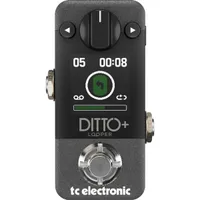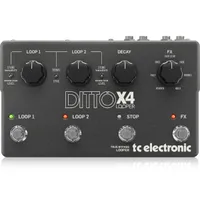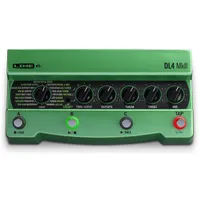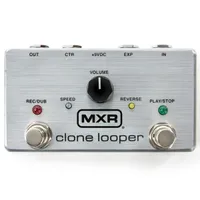Best looper pedals 2025: My favourite loop stations for every budget
Explore my pick of compact and floorboard loopers from the likes of Boss, TC Electronic, Line 6, and more
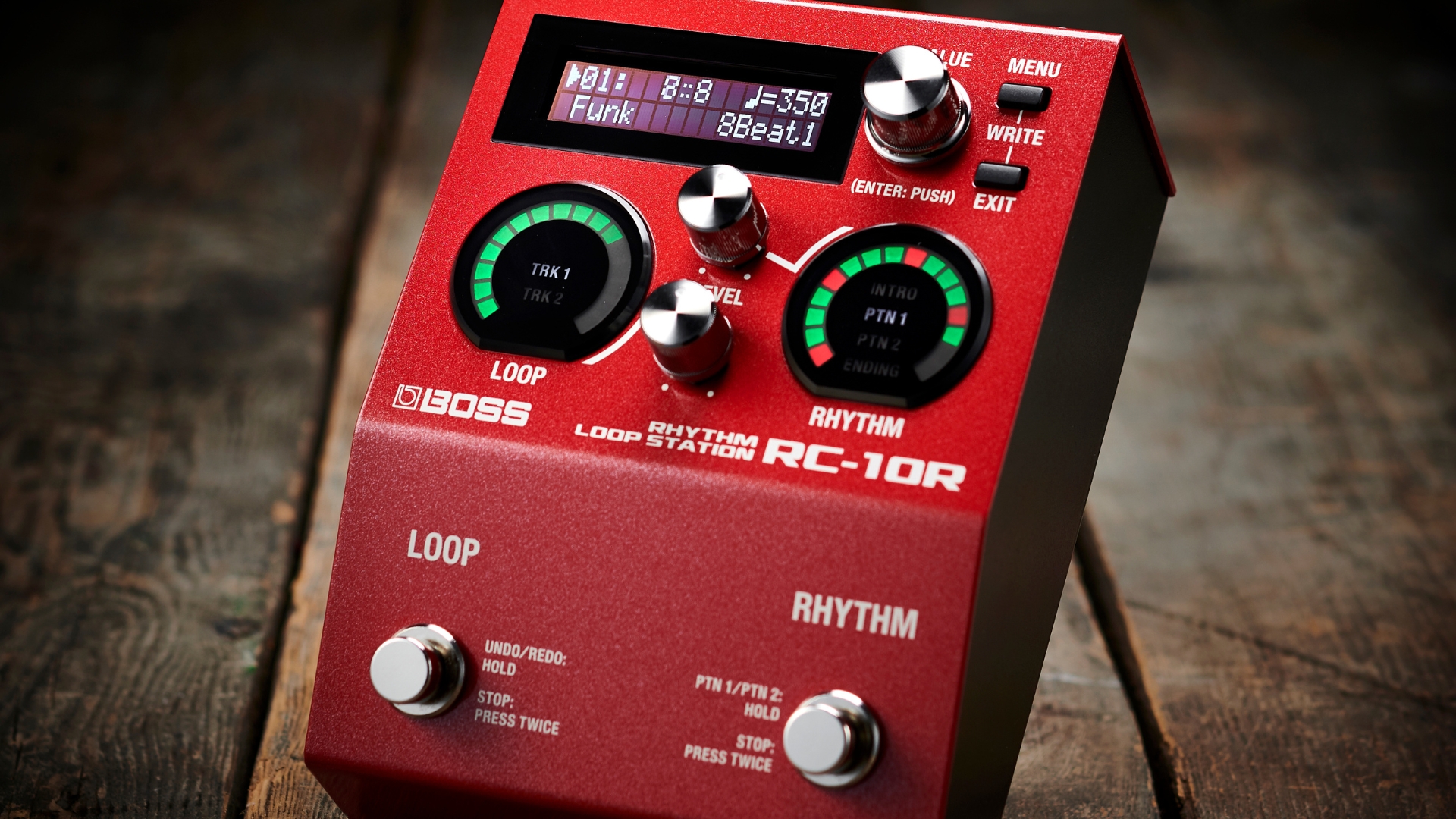
Adding one of the best looper pedals to your rig not only serves a utilitarian purpose, but can also be a big refresher for your guitar playing. A looper allows you to practice your music theory, write better songs, and hone your rhythm chops without having to rely on anyone else. Even if you’re not just playing by yourself, a looper pedal can be used to add layers and textures to your live performances, making it a very powerful tool indeed.
One of the most common questions I get asked about loopers is with regards to audio quality, but the truth is this won’t be an issue with any decent looper pedal. Yes, you will get some loss of detail once you start getting to layers in the double figures, but all of the looper pedals in this guide feature pristine audio quality as a minimum. Another big consideration is the amount of memory a looper pedal has, so make certain your chosen looper has the requisite space for your needs.
If you want the best all-round performance, then I’d recommend you check out the Boss RC-500. For me, it perfectly bridges the gap between one button looper and multi-track, giving you the simplicity of the former with the flexibility of the latter. If you do prefer simplicity however, the budget-friendly TC Electronic Ditto 2 is perfect for those who just want something to stick at the end of their pedalboard and mess around with.
If you’re new to looper pedals, then you should go check out our how to choose section, which will give you the lowdown on what you need to look for when buying. I’ve also curated a bunch of FAQs to answer any burning questions, and a glossary of key terms to get you up to speed on looper-based lingo.
My top picks
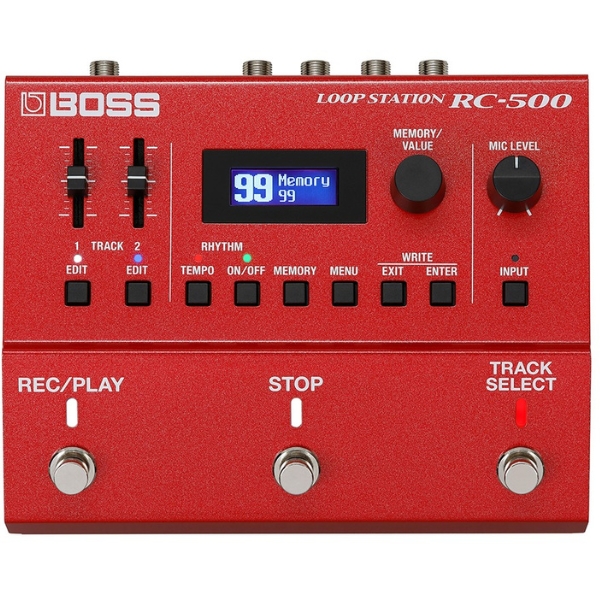
Combining ease of use with plenty of depth and flexibility, the Boss RC-500 is the perfect middle ground for any player who wants a complete feature set without having to squeeze an absolute spaceship onto their pedalboard.
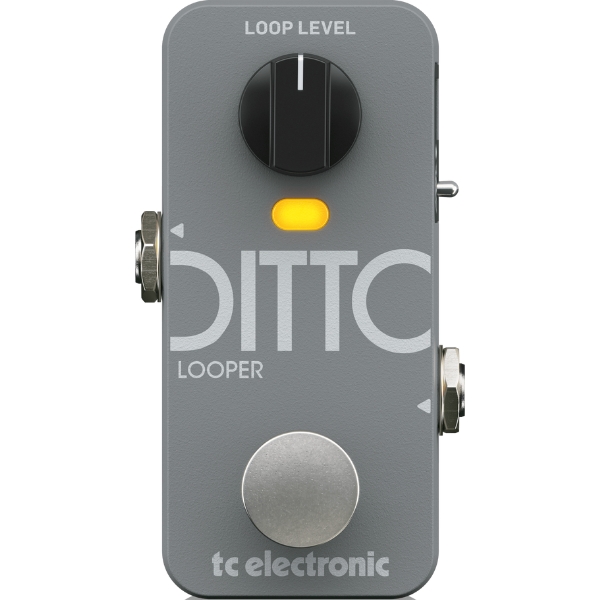
The low-price of the TC Electronic Ditto 2 makes it great for those on a budget, but it’s a surprisingly capable looper pedal despite this. This latest iteration of the legendary mini-looper adds a companion app and a new mode, making it superb value for money.
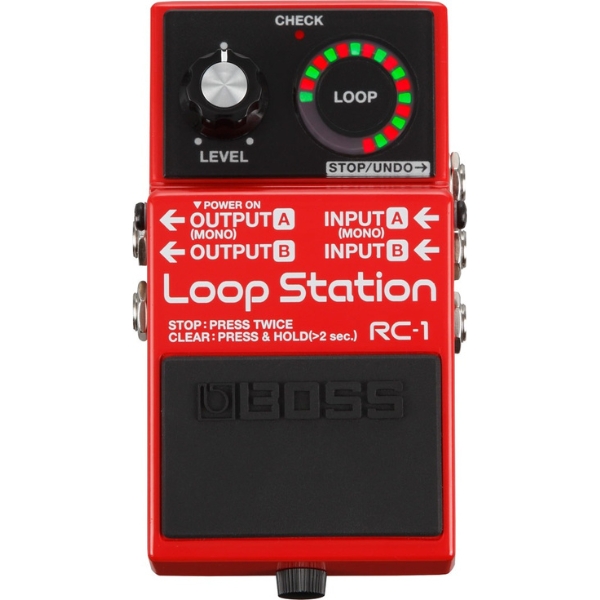
If you’re new to looping, there’s no better place to start than with the Boss RC-1. Its one-button operation is intuitive and the useful visual aids make it easy to keep track of your looping. It’s incredibly well built, and reasonably priced too, making it an easy recommendation from me.
Best overall
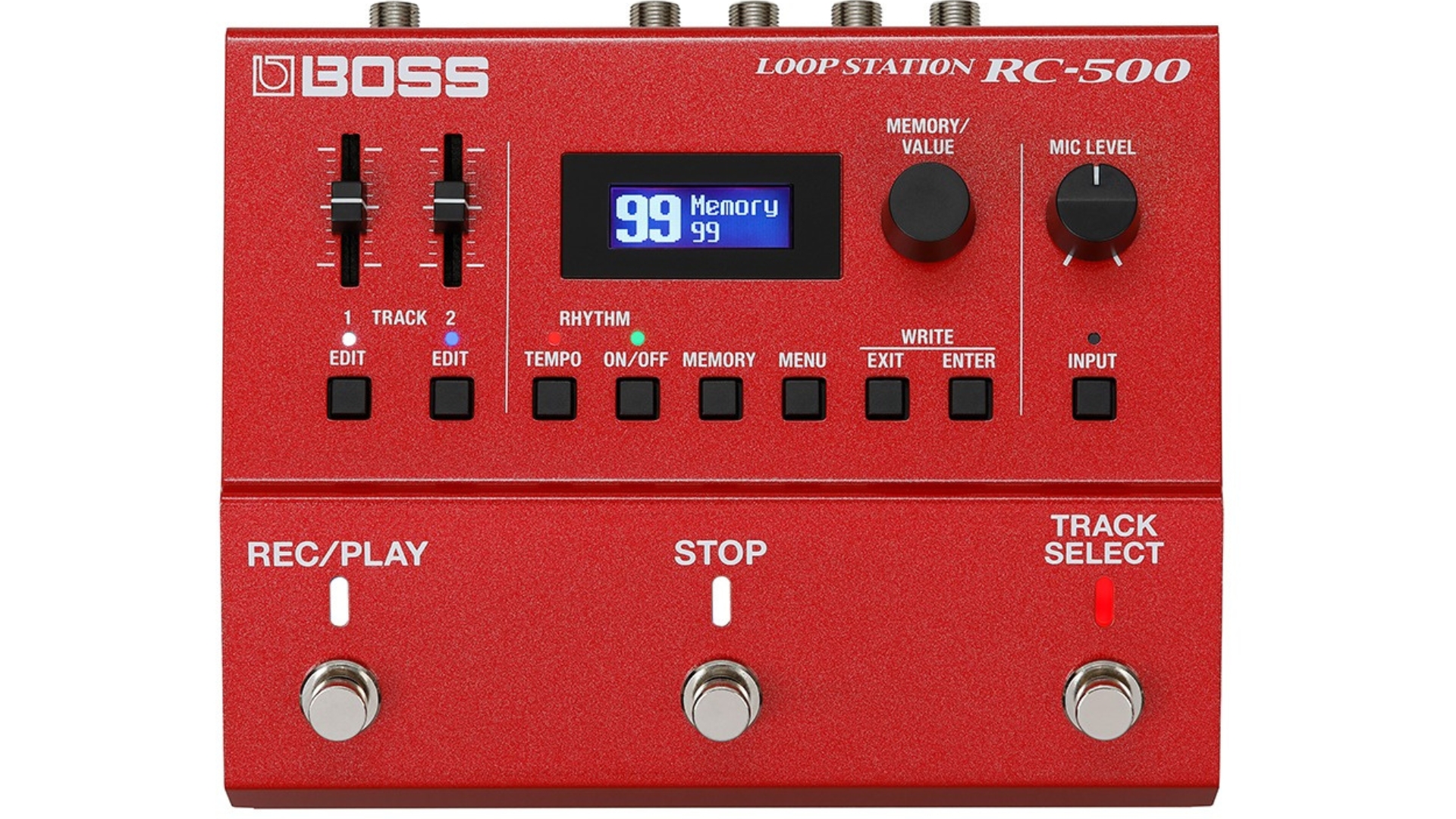
1. Boss RC-500
Our expert review:
Specifications
Reasons to buy
Reasons to avoid
✅Buy if you want a great all-rounder looper pedal: Sitting slightly above the more compact options, the multiple footswitches of the Boss RC-500 make it a very powerful proposition indeed.
❌Avoid if you want simplicity: Although it’s easy to use, this pedal might be overkill for those just looking for a simple looper to use at home.
Overview: For me, the Boss RC-500 represents that perfect crossover point between simple looper pedal and proper multi-track workhorse. It’s idea for those who’ve already owned a looper and want to step up to something with a lot more functionality, without having to sacrifice too much space on the pedalboard.
Build quality: It’s a Boss pedal, so naturally this red box is built like a tank. I’d have zero qualms about gigging this (or any Boss stompbox for that matter) and its rugged metal shell will absolutely put up with the rigours of the road. It’s pretty lightweight too, so you won’t feel too much additional weight carrying your pedalboard around with you.
Usability: Boss loopers are incredibly easy to use, and the RC-500 is no different, despite its deeper functionality. It behaves just as most other loopers do, and you won’t need the manual to get up and running here. The footswitches are clearly marked, and the LED color coding system is really intuitive once you understand what each light means.
The twin-track system means you can have different loops running simultaneously or in series, which is great for having alternating verse and chorus sections. It also has a selection of built-in rhythms which I wouldn’t rely on for live performance, but work great as practice tools when jamming at home. Add in a microphone input with phantom power, and you’ve got one of the most complete loopers on the market.
Best budget
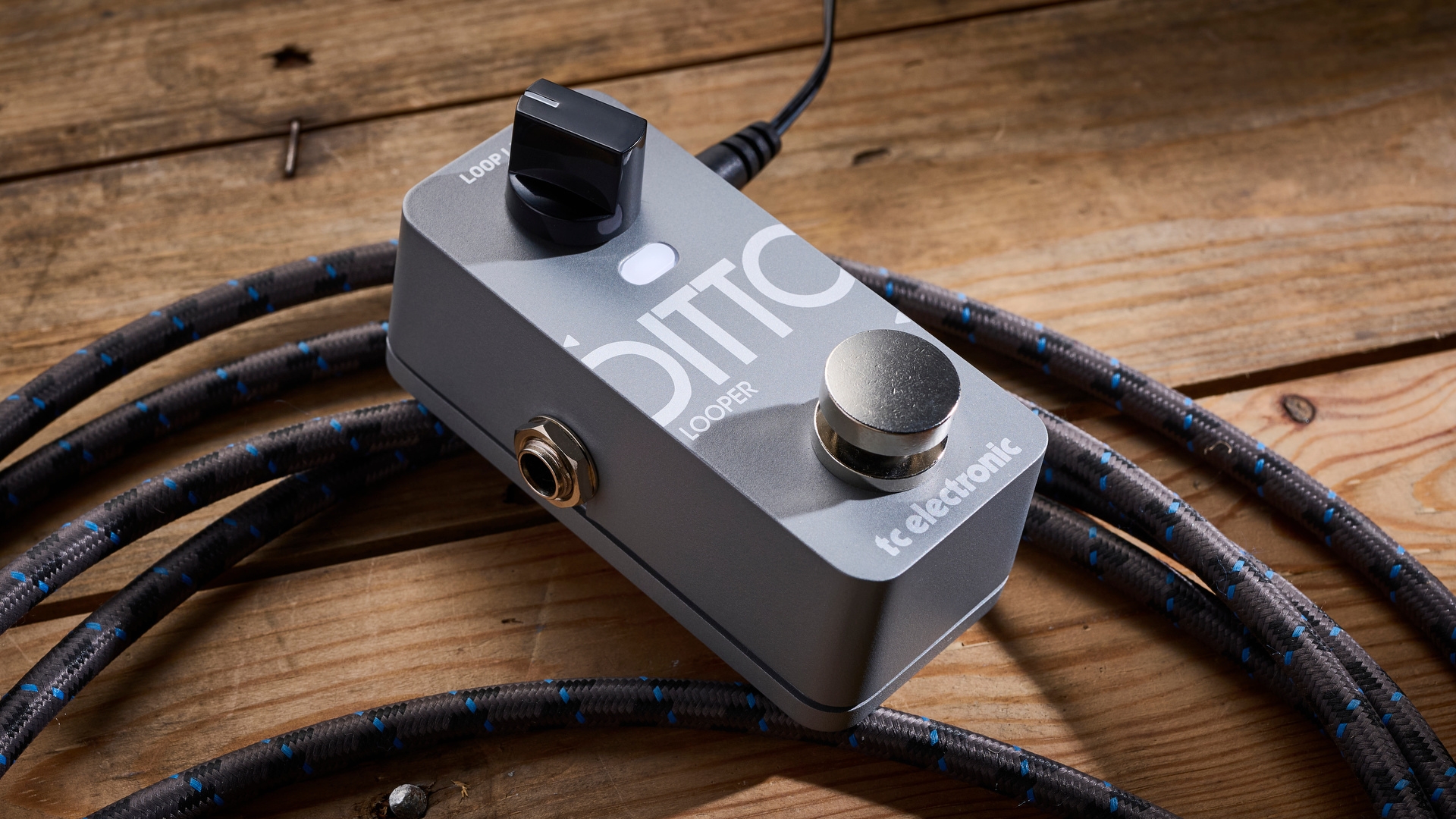
Specifications
Reasons to buy
Reasons to avoid
✅Buy if you want cheap, simple looping: With its single footswitch operation and low cost, the Ditto 2 is the best way to add looping to your pedalboard for less.
❌Avoid if you need multi-tracks: Although you can add plenty of layers here, for those looking to integrate more complex arrangements into their performances, you’ll be better off elsewhere.
Overview: The original TC Electronic Ditto was a total game-changer when it arrived in 2013, and it’s taken well over ten years for the sequel. The Ditto 2 doesn’t really do all that much differently versus the original, but it adds some welcome features that make it a very worthwhile buy for those who need a budget looper pedal.
Build quality: The Ditto 2 is incredibly well put together thanks to a compact, all-metal chassis that will take plenty of abuse. The footswitch feels really durable and offers a nice, wide platform to stomp on, with the single knob feeling similarly robust. It’s incredibly small too, which makes it great for adding looping to a busy pedalboard.
Usability: It’s a single button looper which means it couldn’t be easier to use, just one hit to record your loop, one to stop, and then hit it again to overdub. The level knob lets you set the volume of the loop versus your live guitar playing, and that’s all there is to it. It’s simplicity is what made the original Ditto so popular, but Ditto 2 does have a couple of additional features.
Probably the most useful in my opinion is the ‘loop snap’ mode, which automatically quantizes your loops to make them sound tighter and more in time. Of course, you can switch this off if you like the freedom of setting your own time, but it works incredibly well. It’s accessed via a dedicated companion app, which is where you can also activate the additional single loop mode.

“Overall, the Ditto 2 is an evolution, not a revolution. There are a couple of additional pieces of functionality, but any players familiar with the original know how this works. If you're new to the mini looper world – the Ditto 2 is a great place to be.”
Read more: TC Electronic Ditto 2 review
Best for beginners
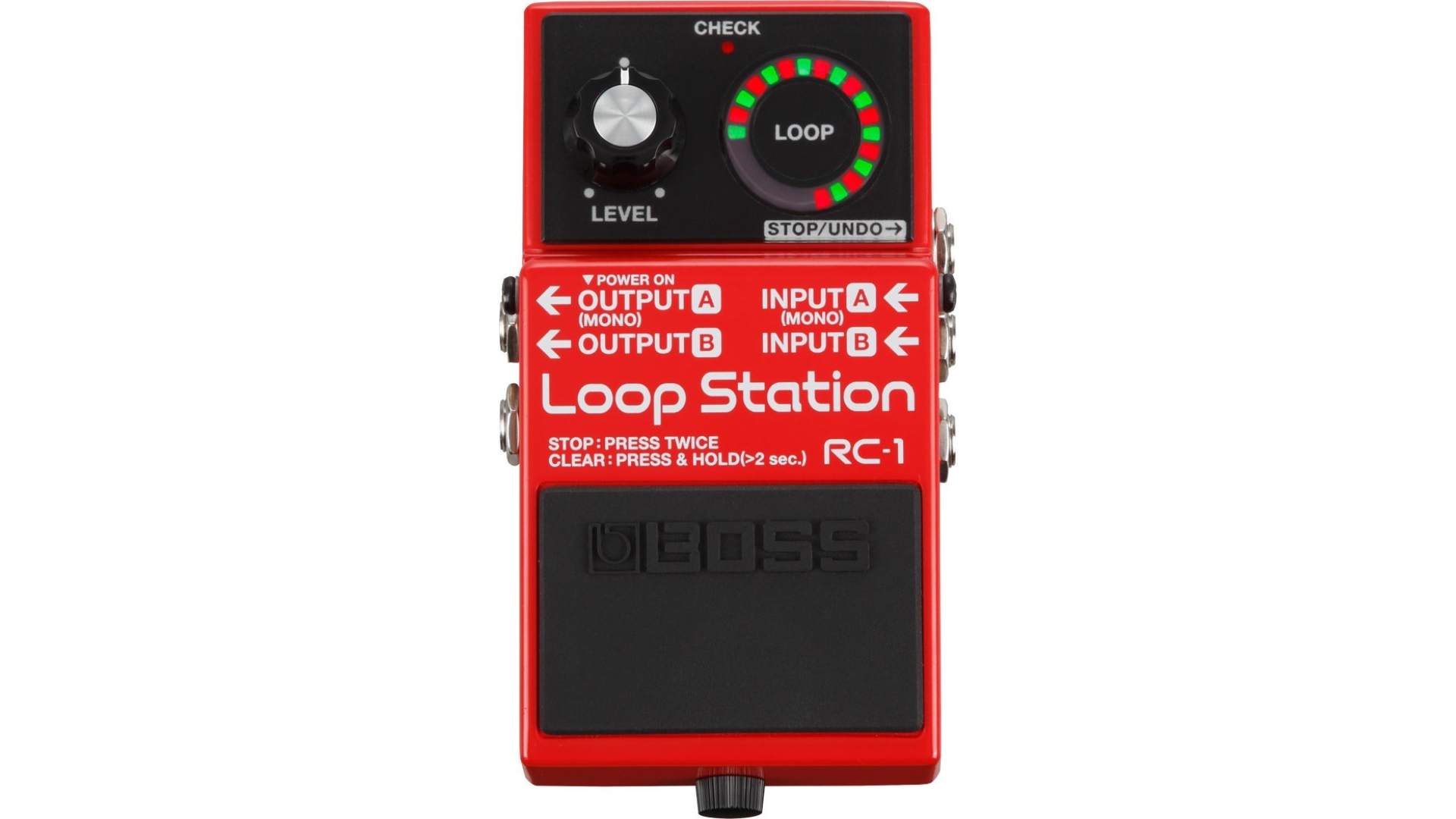
Specifications
Reasons to buy
Reasons to avoid
✅Buy if you want your first looper pedal: It’s incredibly easy to use and great value for money, which makes the RC-1 perfect for first-time loopers.
❌Avoid if you require lots of storage: With no way to store your loops onboard the pedal, you’ll be better off elsewhere if you want the ability to save and recall your loops.
Overview: The Boss RC-1 is the entry point into Boss looper pedals, and unsurprisingly that makes it a great place for beginner loopers to get started. Simple yet effective, the LED display makes it an absolute breeze to keep track of your loops, and it’s very affordable too.
Build quality: Like any Boss stompbox the RC-1 is ruggedly built, taking Boss’ usual compact pedal format. With a single knob there’s not much to go wrong here, and as with any other Boss pedal I have no doubt about its ability to stand the test of time. It’s size makes it easy to fit onto a pedalboard, and a five-year warranty gives you peace of mind if anything were to go wrong.
Usability: The large switch of the Boss compact pedal makes it very easy to hit, which is a definite boon for newer players who might not have their stomping accuracy down just yet. It makes for one less thing to think about when looping which is a always a good thing. It comes with record mode enabled which allows for overdubs, but you can change it to single loop recording if you want.
The star of the show here is that circular LED which, as well as letting you know what mode you’re in, also shows you how far through your loop you are - a big help when getting the timing right of your loops. The lack of ability to save your loops is the only real weakness with the RC-1 but considering the price, I can forgive it.
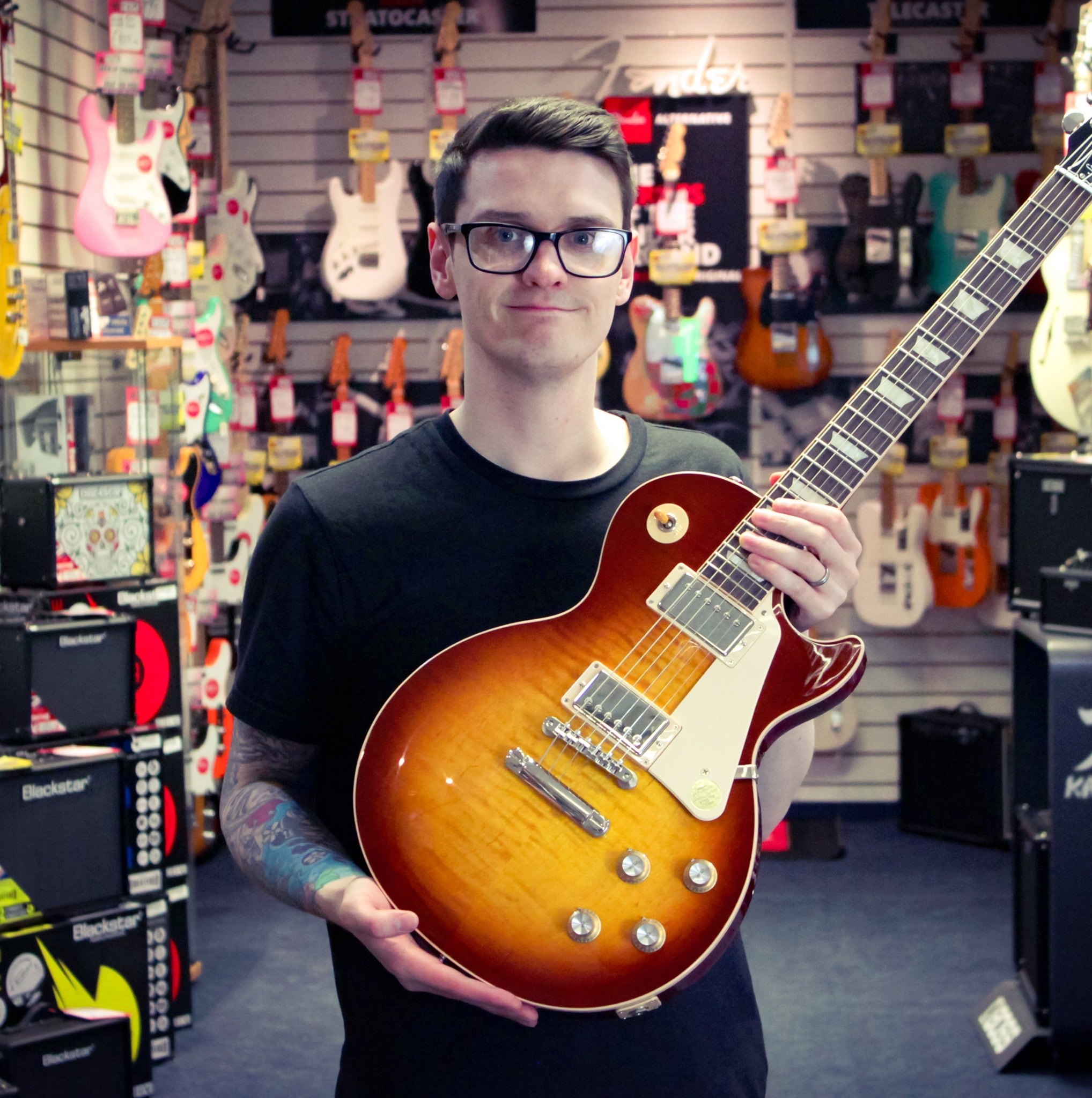
“Overall this is a fantastic pedal, and for the price, it has to be one of the top loopers on the market. Boss really has knocked it out of the park with this ultra-reliable and insanely easy-to-use unit. So whether you're looking for your first looper, or just need a simple, no-nonsense pedal, then you should definitely pick this one up. ”
Read more: Boss RC-1 review
Best for live

4. Pigtronix Infinity Looper 3
Our expert review:
Specifications
Reasons to buy
Reasons to avoid
✅Buy if you want a looper to play live with: With MIDI functionality and excellent build quality, the Infinity Looper 3 is a great choice for those playing live.
❌Avoid if you want your first looper: With its additional functionality, this looper pedal would be overkill for a beginner.
Overview: If you’re after a well-made looper pedal with MIDI to integrate into a live setup, the Pigtronix Infinity 3 is an excellent option. Despite its depth of features, it’s actually pretty easy to get to grips with and the layout is extremely well thought-out, making it great for live performers.
Build quality: The Infinity 3 is a hefty bit of kit, so it will be more than capable of putting up with regular gigging. The footswitches feel rock solid, as do the rotary knobs used for selecting your loops or changing presets, while the slight wedge shape angles the switches towards you which works great when it's mounted on your pedalboard.
Usability: The Pigtronix Infinity 3 is amongst the most intuitive looper pedals I’ve used, and I love that its design doesn’t rely on a screen or menus, with every control available on the front panel. It’s easy enough to pick up and play without reading the manual, although you will need to dive in to access the more advanced features this pedal contains.
Syncing MIDI can be tough with some pedals but this one is an absolute breeze to get set up with MIDI-enabled pedals, groove boxes, and synthesizers. It makes it a great match for those who want to use tempo-synced looping, great for enhancing live shows and adding additional elements to your compositions.
Best with drums
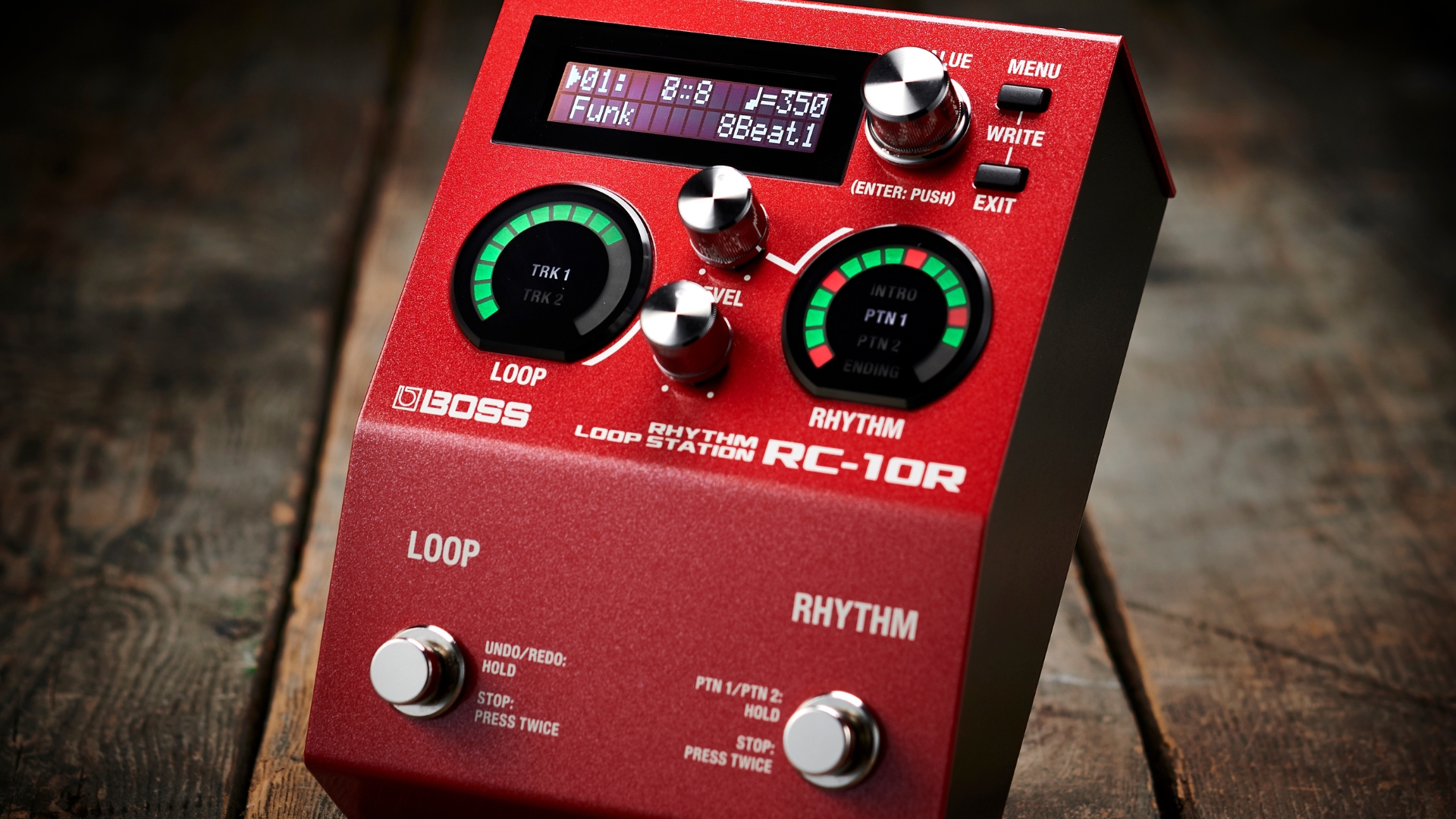
Specifications
Reasons to buy
Reasons to avoid
✅Buy if you want to jam with drums: With a myriad of different rhythms and drum sounds, the RC-10R is the perfect ‘band-in-a-box’ looper.
❌Avoid if you want to busk: With no battery power, it’s not the ideal solution for those who want to use rhythms while busking.
Overview: For many players, a good looper pedal with built-in drum patterns can satisfy that craving to songwrite, jam with others, as well as help improve their improvisational skills. The Boss RC-10R is for me, one of the best looper pedals with drums out there right now, offering ease of use, excellent build quality, and some excellent rhythm sounds.
Build quality: Although it’s not the typical Boss compact stompbox format, it’s still very well built and features the same housing as the other Boss 200 series pedals. The all-metal construction feels very durable, and you get two more traditional foot switches to control your loops and rhythms separately.
Usability: Like any Boss looper, the RC-10R is an absolute breeze to get looping with, providing similar functionality to the simpler RC-1 and RC-5. It’s true stereo, which also allows you to send your loops to one source and rhythms to another, great if you want your drum sounds going to a PA while your loops go through your guitar amp.
There are plenty of rhythms sorted by genre for you to choose from, whether you like funk, blues, rock, or any other kinds of drum styles. You can change the drum kits for different sounds as well as add varying levels of reverb, and they’ll automatically play a fill when you switch between song sections.

“It will not take you long to fathom the RC-10R's depths. It's intuitive. It's user-friendly. It lets you focus on the important part in this whole equation: your guitar playing, and to that end it is hard to think of a tool better suited to practice drills or filling out a live performance for a solo guitarist.”
Read more: Boss RC-10R review
Best creative
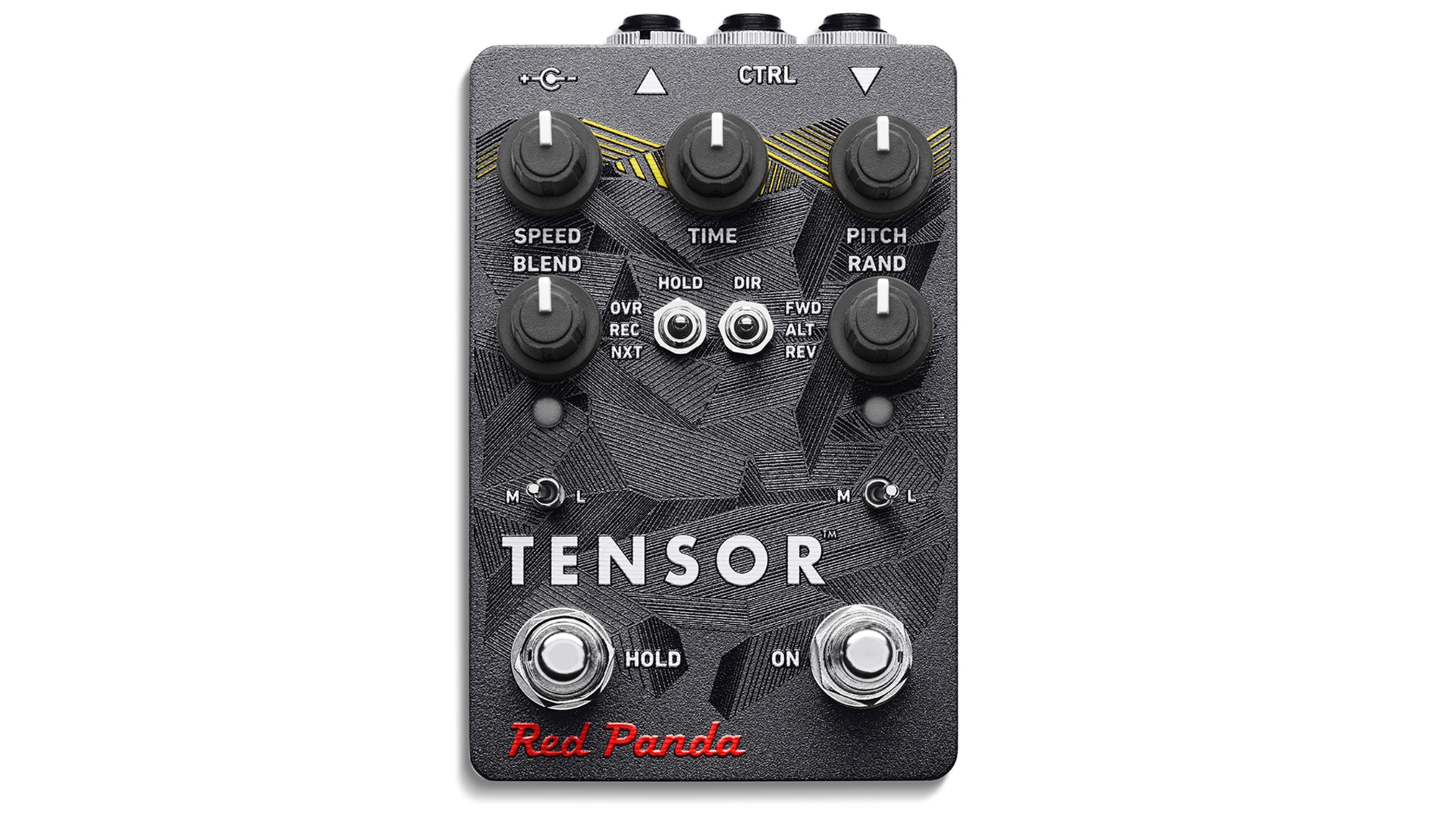
6. Red Panda Tensor
Our expert review:
Specifications
Reasons to buy
Reasons to avoid
✅Buy if you want a looper pedal with a difference: The Tensor encourages creativity with its wild effects, making it great for those who want something different from the rest.
❌Avoid if you value simplicity: This pedal requires some hands-on time to get the most out of it, so if you want something simple then you should look elsewhere.
Overview: If you’ve tried some looper pedals already and fancy something different, the Red Panda Tensor is a great option for the creatively minded. It’s a loop pedal at heart, but if offers some very unique effects based on tape machines that set it apart from others in this list.
Build quality: It’s a well-built pedal, and looks more like a regular digital stompbox than a typical looper pedal. Dual footswitches offer plenty of control over both looping and effects, and it’s nice and compact, so it will nestle in amongst your other pedals easily.
Usability: There’s no question, this is one of the more difficult pedals on the list to get to grips with. Not because it’s particularly unintuitive, but just because it’s a little different to a regular looper pedal and has a lot of additional functionality. It’s not so much a looper pedal but a digital tape machine, which makes a lot of sense when you think that some of the first actual looping was done with tape machines by Robert Fripp.
From tape stops to reverse mode and detuning, there’s a lot you can do with this pedal, and it’s a great choice for someone who doesn’t want a typical looper. A TRS jack allows for connecting additional switches or expression pedals too, which opens up a lot of creative possibilities with this looping funhouse of a pedal.
Also consider
For most guitarists, the above looper pedals should cover most of the bases. That said, we've reviewed loads of great looper pedals here at MusicRadar, so here are some more options for you.
TC Electronic Ditto+
1-hour looping | No effects | No MIDI
This super TC Electronic Ditto+ mini pedal features a bright LED screen for real-time feedback, a whopping 60 minutes of loop time, and 24-bit audio quality. The Ditto+ also features the groundbreaking 'Extended Loop Mode', which allows the user to overdub longer phrases on top of shorter loops. Basically, you could overdub a 2-bar melody on top of your initial 1-bar loop, and the Ditto+ will cleverly extend the original loop, so it aligns with the new overdub.★★★★½
Read more: TC Electronic Ditto+ review
TC Electronic Ditto X4 Looper
5 minutes looping | 7 effects | MIDI
The no-nonsense TC Electronic Ditto X4 serves up two stereo loops, each with its own footswitch, as well as a dedicated ‘stop’ switch, and an FX switch. You can use the latter to make a loop stop at the end of its cycle, stop immediately, or even via a fade or cool tape reel-esque slowdown, as well as reverse, or half-/double-speed a loop.
★★★★½
Read more: TC Electronic Ditto X4 review
Line 6 DL4 MKII
240 seconds looping | 45 effects | MIDI
The DL4 MKII sees a significant upgrade on the original’s capabilities but retains an easy-to-use ethos with four separate footswitches to control your loops. It’s got up to 240 seconds of looping time, which goes down to 120 seconds in stereo mode, so whilst it’s not as long as some on this list it’s still plenty to be getting on with. You can use the delays with the looper too, and it’s easy to switch between both modes by simply holding down the fourth footswitch.
★★★★½
MXR M303 Clone Looper
6 minutes looping | 3 effects | No MIDIConsidering its rather tiny footprint, the MXR M303 Clone Looper is packing a lot of functionality. It’s got a whopping six minutes loop time, and the ability to layer unlimited loops too, making it the perfect canvas for creative players to paint upon. Two separate footswitches allow you to play and stop or record and overdub, making it a great option for live players. Four different lights ensure you always know where you are and what’s happening with the loop, especially important when improvising on stage.
★★★★½
How to choose

If you’re new to looper pedals and are unsure which one to go for, this section is for you. By taking into account the following aspects of looper pedals, you’ll be better able to make a buying decision.
1. Use case
MusicRadar's got your back
The type of player that wants a looper generally falls into a few categories. Those who want something to jam at home with, whether that’s creating songs or practicing lead work, those who want to buff up their live shows, either solo or as part of an ensemble, and those who want a creative tool to make ambient sounds with.
Deciding which looper to choose then, means you need to think about what your own use case is, as this will define what is best for you. If you want something to mess around with, going cheap like the TC Electronic Ditto 2 will be your best match. For live players, check out the Boss RC-500 of Pigtronix Infinity 3. For those who want to make weird sounds, look at the Red Panda Tensor for the creative stuff.
2. Size
Depending on your use case, you’ll want to take into consideration the size of your looper, especially if you’re mounting it on a pedalboard. Some loopers are pretty big, and also benefit from additional footswitches so its worth considering how much room your chose looper will take up. Of course, if you’re just playing at home then it’s going to be less of an issue whether you have yours mounted on your pedalboard or not.
3. Loop time
The amount of time your looper is capable of doing is another big thing you should think about. Do you want to loop simple chord progressions or create entire songs? Each of the loopers on this list as a loop time specification which will tell you how much it’s capable of doing. It’s also worth noting that this time is usually halved if you’re running the pedal in stereo.
4. Overdub/redo
Nearly every looper I’ve come across has the ability to perform overdubs, but redoing a loop when you’ve made a mistake is another function that can be very useful. No one wants to hear a bum note endlessly looping, so check to see if your chosen looper has this function, especially if you’re performing live. It’s also important to note that some loopers have this, but it’s only accessible via an external footswitch.
FAQs

How do I use a looper pedal?
Although the premise of using a looper is simple, it actually takes a bit of practice to get used to using one. Some loopers have just one switch, meaning you’ll have to get used to double-tapping, single-tapping, or holding the switch to manipulate your loops. For those loopers with multiple switches things get a lot easier, and having a dedicated play/record and stop switch is definitely a useful feature.
Your main issue when getting started with looping will be timing, particularly if you’re playing with a band. On your own, it’s not quite as bad if you mess the timing up, but when there are multiple people following the loop it’s quite easy for things to get messy-sounding. Multiply this further when playing live and the onstage sound isn’t great. The key here is to practice a lot before you take it on stage and make sure at the very least your drummer has good monitoring on stage.
Where does my looper pedal go in the chain?
For the most part, you’ll want your looper pedal to go at the end of the signal chain as it will capture all the sound but this isn’t necessarily always the case. If for example, you want to bypass a certain effect so it doesn’t appear in your loops, then you can place the looper before the effect in question. You might do this if you don’t want delay or reverb tails cutting off unexpectedly as you loop around.
Should a looper pedal go in the effects loop?
It’s up to you really, placing your looper in the effects loop can certainly add some flexibility, allowing you to record loops with and without them being shaped by your amp’s EQ and distortion. If you don’t rely on amp distortion, then running in the effects loop can certainly offer some tonal benefits. Say for example you want to record a clean guitar loop, then play over it with a distorted tone, then placing it in your effects loop will offer that functionality. Conversely, if you play a looper in front of your amp, then any changes you make to your amp's EQ controls or gain will also affect your loops.
How do I connect a looper pedal to an amp?
You can use your looper pedal just like a regular guitar pedal, placing it at the end of the chain with the input coming from the last pedal on your pedalboard and the output going to the amplifier. You can also set it up in your effects loop if your amp has one, by routing the input on your looper to the ‘send’ on your FX loop before plugging the ‘return’ on your amp into the output of your looper pedal.
Can you use a loop pedal with any amp?
Yes, you can use a looper with any guitar amplifier, just plug it in as we’ve mentioned in the questions previously, and away you go! We’ve yet to come across an amplifier that doesn’t work with a looper pedal.
Key terms
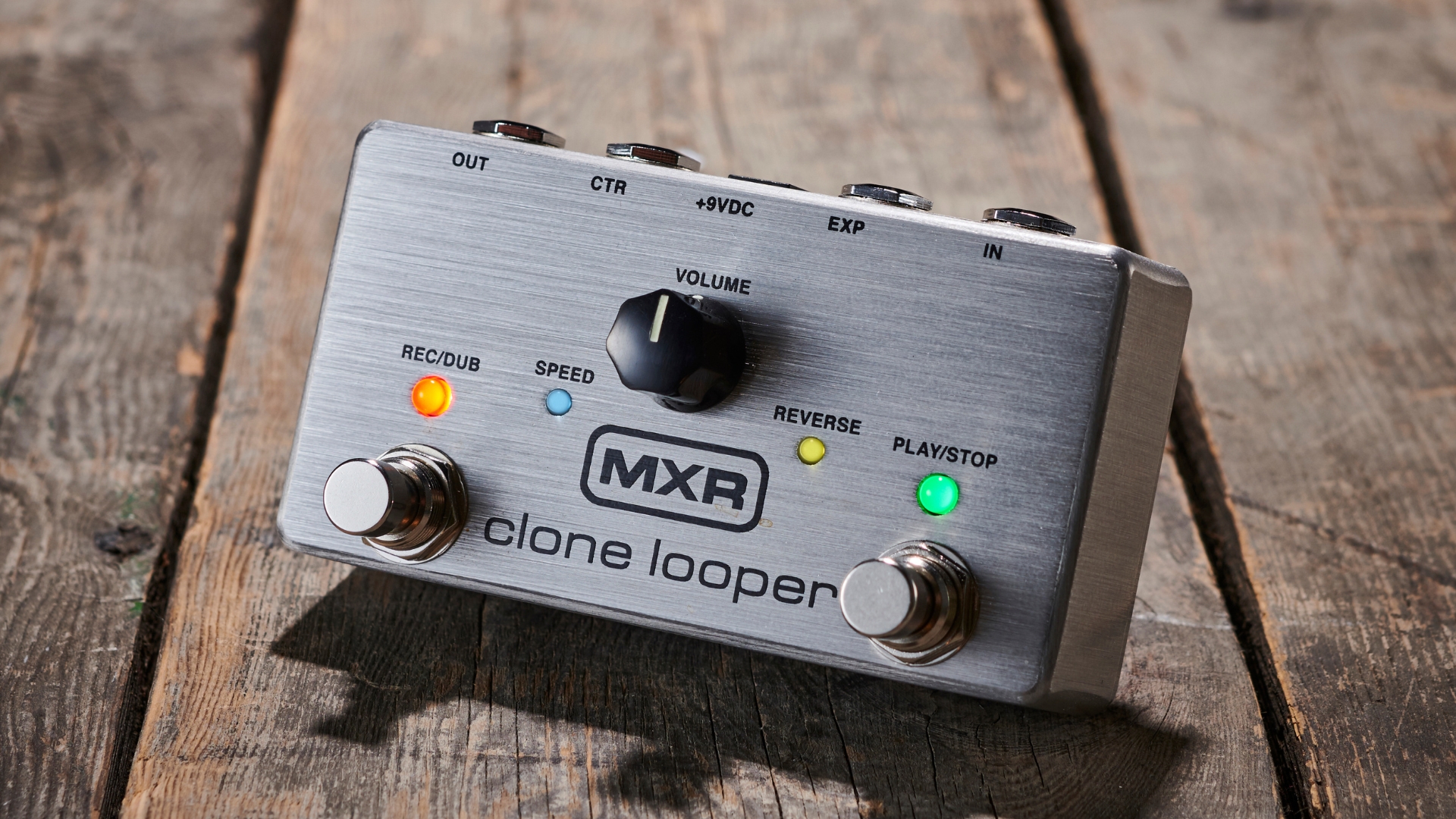
- AD/DA conversion: The process of turning analogue guitar signals into digital data, then the reverse process of converting to back to analogue to be sent to your guitar amplifier.
- Bit depth: A measure of audio quality in bits, with a higher number meaning better quality.
- Buffered bypass: A type of switching that boosts the signal as it passes through a guitar pedal, designed to prevent signal loss in long cable runs.
- Companion app: A piece of software that connects to a looper pedal to unlock extra functionality, usually via a smartphone or laptop.
- EQ (equalisation): On a looper pedal these are tone controls that let you adjust the bass (low), middle, or treble (higher) frequencies.
- Expression pedal: An expression pedal is a rocker footswitch that allows you to manipulate effects and parameters in real time.
- External footswitch: An additional footswitch you can add to certain looper pedals to unlock additional functionality.
- Latency: The delay between playing a note and hearing it through the looper. It will be imperceptible with any good loop pedal.
- Loop aging: An effect that mimics tape loop degradation, where each repetition results in a more lo-fi sound.
- Loop time: The maximum amount of time a looper pedal can loop for.
- MIDI (Musical Instrument Digital Interface): A method of communication using numbers that allows musical instruments and devices to send messages to one another.
- Multi-track looper: A looper pedal that can play back multiple loops at the same time, great for building complex arrangements.
- Overdub: The act of recording new layers on top of an existing loop.
- Phantom power: A method of powering condenser microphones through an XLR input.
- Quantize: Tech that automatically aligns your loops so they’re perfectly in time.
- Redo: A function that lets you bring back a deleted loop.
- Reverse: An effect on many loopers that plays your loop in reverse.
- Sample rate: The number of times per second audio is captured, with a higher sample rate resulting in higher quality audio.
- Stompbox: A colloquial term for a guitar pedal.
- Undo: A function that removes the last recorded loop.
How we test
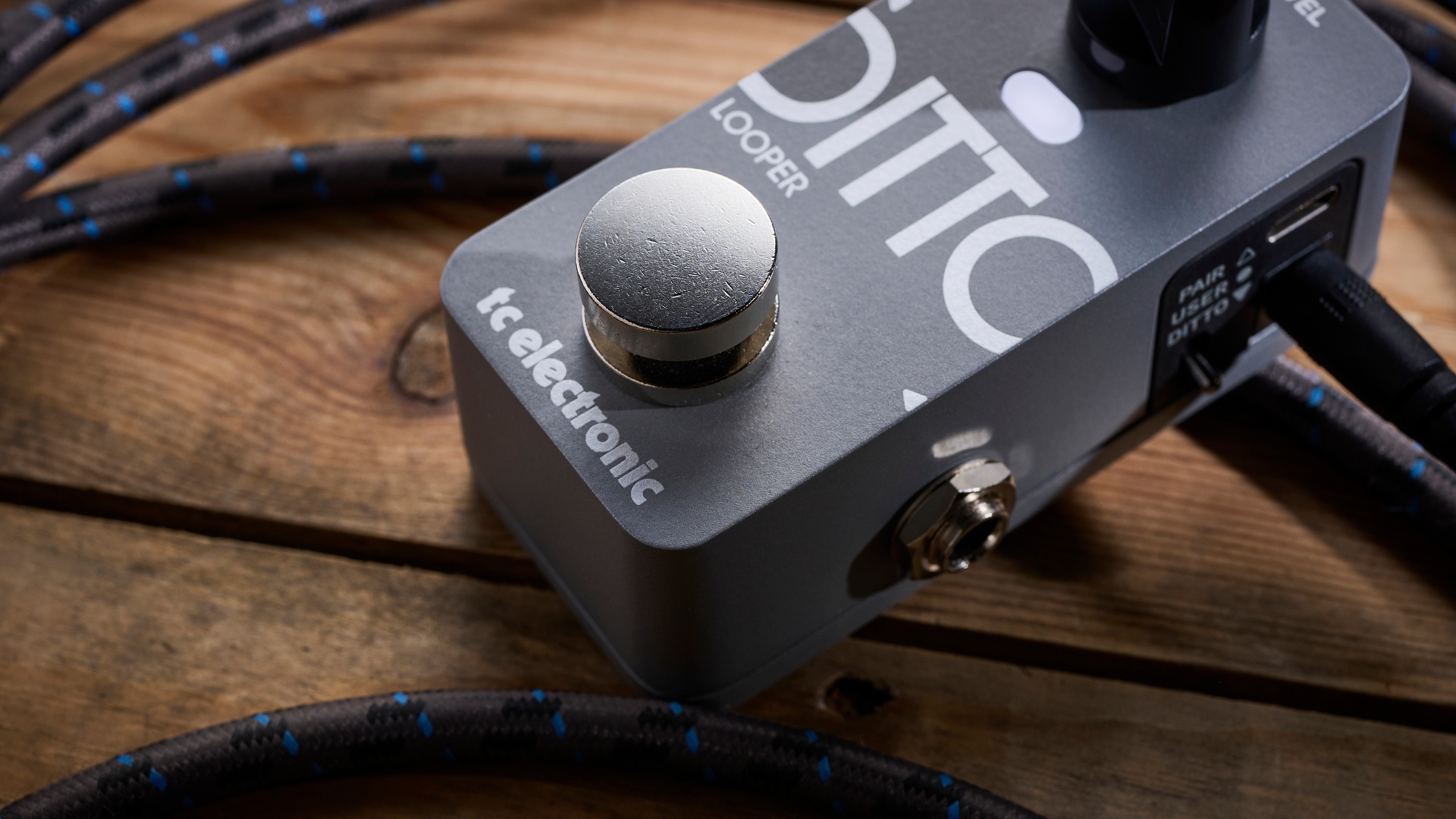
Like all of the guitar pedals we test hear at MusicRadar, looper pedals are subjected to an exhaustive set of examinations to measure how they hold up. These take the form of three core metrics by which we judge all looper pedals, and all guitar pedals from the wider world. By testing looper pedals in this way we can ensure parity in the way we rate and score different aspects of the pedals, making for a fair and rigorous testing program.
First of all we’ll look at the build quality of the pedal. Loopers will be stomped on repeatedly, so they need to be able to hold up to these pressures, particularly if they’re aimed at live players. Our review begins with an up close inspection of every aspect of the pedal, from all the knobs and controls to the screws that hold the chassis together.
Next we’ll test the usability of the pedal, usually by seeing how far we can get with it before we have to resort to using the manual. A good looper pedal should be intuitive enough for anyone to use, but may also feature deeper functionality. Here, we’ll examine how easy it is to get it up and running and start looping.
We’ll then look at any additional connectivity and functionality, whether that’d adding additional footswitches, utilizing MIDI connectivity, and trying out any built in rhythms or effects the pedal comes with. Deep diving here gives us a good view on which audience the pedal is trying to appeal too, helping contextualize our review of the pedal.
To be totally honest, we’ll usually finish a pedal review by looking at the sounds, but most looper pedals offer excellent sound quality. We do check the pedal's capabilities in terms of overdubs, seeing how many times we can loop before the sound starts to degrade, check how it interacts with other pedals and in different parts of the signal chain, and integrate it into our existing rigs to experiment with.
Find out more about how we test music gear and services at MusicRadar.
Related buying guides
- These are the best pedalboard power supplies right now
- The best multi-effects pedals for guitarists
- These are the best chorus pedals for guitarists
- You could also deck out your board with the best reverb pedals
- Explore the best guitar tuners for acoustic, electric and bass
- Check out some of the best gifts for guitarists
Want all the hottest music and gear news, reviews, deals, features and more, direct to your inbox? Sign up here.
Mike is Editor-in-Chief of GuitarWorld.com, in addition to being an offset fiend and recovering pedal addict. He has a master's degree in journalism, and has spent the past decade writing and editing for guitar publications including MusicRadar, Total Guitar and Guitarist, as well as a decade-and-a-half performing in bands of variable genre (and quality). In his free time, you'll find him making progressive instrumental rock under the nom de plume Maebe.
- Matt McCrackenJunior Deals Writer
- Daryl RobertsonSenior Deals Writer
